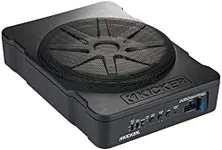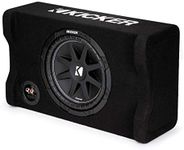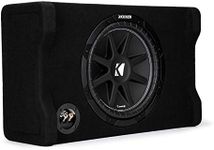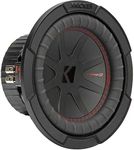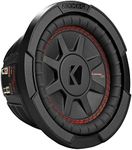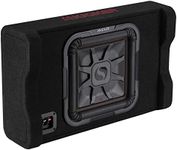Buying Guide for the Best Kicker Subwoofers
Choosing the right kicker subwoofer can significantly enhance your car audio experience. Subwoofers are designed to reproduce low-frequency sounds, adding depth and power to your music. When selecting a subwoofer, it's important to consider various specifications to ensure you get the best fit for your needs and preferences.Power HandlingPower handling refers to the amount of power a subwoofer can handle without getting damaged. It's usually measured in watts and includes two values: RMS (continuous power) and peak power. RMS is more important as it indicates the power the subwoofer can handle consistently. If you enjoy loud music or have a powerful amplifier, look for a subwoofer with higher RMS power handling. For casual listening, a lower RMS rating will suffice.
SensitivitySensitivity measures how efficiently a subwoofer converts power into sound, expressed in decibels (dB). Higher sensitivity means the subwoofer can produce louder sound with less power. If you have a less powerful amplifier, choose a subwoofer with higher sensitivity (above 90 dB). If your amplifier is powerful, sensitivity is less critical, but higher values can still enhance performance.
Frequency ResponseFrequency response indicates the range of frequencies a subwoofer can reproduce, measured in Hertz (Hz). A wider frequency range means the subwoofer can produce deeper bass and higher low-end sounds. For deep, rumbling bass, look for a subwoofer with a lower minimum frequency (around 20 Hz). If you prefer a balanced sound, a subwoofer with a broader frequency range will be ideal.
ImpedanceImpedance is the resistance a subwoofer presents to the amplifier's power, measured in ohms. Common values are 2, 4, and 8 ohms. Lower impedance subwoofers (2 ohms) can produce more power and louder sound but may require a more powerful amplifier. Higher impedance subwoofers (8 ohms) are easier on the amplifier but may not be as loud. Match the subwoofer impedance with your amplifier's capabilities for optimal performance.
SizeSubwoofer size, measured in inches, affects the depth and quality of the bass. Larger subwoofers (12 inches or more) can produce deeper and more powerful bass, ideal for bass-heavy music genres. Smaller subwoofers (8-10 inches) are more compact and can fit in tighter spaces, providing punchy bass suitable for various music styles. Consider your vehicle's space and your bass preference when choosing the size.
Enclosure TypeThe enclosure type of a subwoofer affects its sound quality and performance. Common types are sealed, ported, and bandpass. Sealed enclosures provide tight, accurate bass and are compact. Ported enclosures offer louder, booming bass but are larger. Bandpass enclosures deliver the most powerful bass but can be bulky and less accurate. Choose the enclosure type based on your space constraints and desired bass quality.
